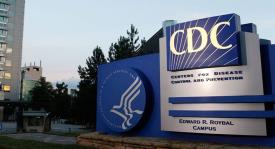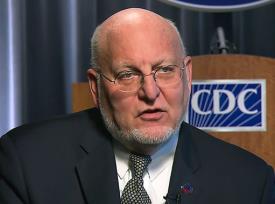|
 Fatalities numbering 110,000 to date and unprecedented damage to all sectors of the U.S. economy including the poultry industry by COVID-19 demand an understanding of the cause, response and reaction to the pandemic. We have relied on the Centers for Disease Control and Prevention (CDC) to protect public health over the past 74 years. The Agency is the model for all modern national public health agencies and has trained three generations of epidemiologists working in the U.S. and the World. The CDC functions as a research institute, an organization to investigate disease outbreaks in the U.S. and internationally and is a resource to help formulate national policy on health. Notwithstanding innumerable significant achievements, the CDC is now receiving criticism for its performance during the COVID-19 crisis. Fatalities numbering 110,000 to date and unprecedented damage to all sectors of the U.S. economy including the poultry industry by COVID-19 demand an understanding of the cause, response and reaction to the pandemic. We have relied on the Centers for Disease Control and Prevention (CDC) to protect public health over the past 74 years. The Agency is the model for all modern national public health agencies and has trained three generations of epidemiologists working in the U.S. and the World. The CDC functions as a research institute, an organization to investigate disease outbreaks in the U.S. and internationally and is a resource to help formulate national policy on health. Notwithstanding innumerable significant achievements, the CDC is now receiving criticism for its performance during the COVID-19 crisis.
|

Dr. Robert Redfield |
The New York Times recently completed an extensive investigation on the response of the CDC to COVID-19, preempting a formal Congressional investigation expected in early 2021. According to the New York Times the problems at CDC that affected the National response to COVID-19 included:-
- An outdated and inappropriate system to capture data from diverse sources including state and regional public health departments, received by the Agency as E-mails, faxes and telephone reports. In turn there were lacunae in communication between hospitals receiving patients and state health departments. Essentially CDC lacked the ability to appreciate the magnitude of the outbreak during the critical early weeks when community transmission occurred but was not recognized.
- There was a failure in both communication and mutual understanding between the White House and the CDC. It is evident that ideology and political considerations gained precedence over scientific fact at an early stage in the outbreak. By late March, probably three months into the event it was questionable as to who was in control of the public health emergency that should have been addressed aggressively by the CDC.
- The New York Times suggests and possibly with good reason, that the culture within the CDC favored inaction without absolute knowledge. It is possible that the Administration appointee to the Head of CDC, Dr. Robert Redfield lacked the support of his immediate subordinates. This may have arisen from the perception that Dr. Redfield was “an administration man” unsympathetic to the mores and traditions of the Agency. It is also possible that despite his technical and administrative qualifications and experience gained in the military, Dr. Redfield lacked the ability to lead a team of experienced and dedicated scientists, field investigators and public health specialists to develop a coherent and appropriate strategy. The vacuum created by inaction by the CDC allowed conflicting opinions to be expressed regarding the epidemiology of COVID-19 from both academia and government. Ultimately pronouncements at variance with scientific fact and based on political expediency created confusion and distracted from required declaratory messages from the CDC. Eventually amid the negative publicity and inappropriate statements hyped by talk-show hosts and the web, more authoritative voices achieved prominence including Dr. Anthony Fauci of the NIAID and Dr. Deborah Birx of the Presidential Coronavirus Task Force. During March Dr. Redfield provided scientific input to decisions but his television presence lacked conviction to the detriment of the image of the CDC.
- The CDC failed in the initial attempts to develop and deploy a suitable laboratory procedure to identify COVID-19 antigen. Restrictions placed on independent university and state laboratories and poorly defined and constantly evolving criteria to clinicians to test patients minimized the true incidence rate and delayed implementation of preventive measures during the early critical weeks.
- Recommendations based on science and emerging information on the infectivity of SARS-CoV-2, the virus responsible for COVID-19, that eventually were issued by CDC with respect to reopening the economy were modified and diluted by the White House based on political and economic consideration. Again this caused confusion among state and regional health authorities and the general public, adding to general concern and reducing confidence in the CDC.
We apparently learned a considerable amount from the SARS and Ebola outbreaks in 2003 and 2014 respectively. Due to reorganization in the White House in 2018, personnel in the Directorate for Global Health, Security and Biodefense within the National Security Council, effectively the Nation’s pandemic planning and response group, were reassigned. Absent critical personnel and an appropriate structure, the Government apparently failed to recognize or accept the severity of the COVID-19 pandemic in late January extending into February 2020. Accordingly, recommendations and preparations arising from previous disease outbreaks were not implemented.
It is hoped that a detailed investigation will be forthcoming when we have eventually controlled COVID-19 through applying public health measures and deploying an effective vaccine. A body of scientists and public policy specialists must evaluate what was effective and what went wrong within the CDC, the response to the outbreak, interaction with the White House, the NIH, the FDA and state agencies. Unless a comprehensive review is undertaken our Nation will not be able to correct deficiencies before being confronted with a subsequent emerging pandemic.